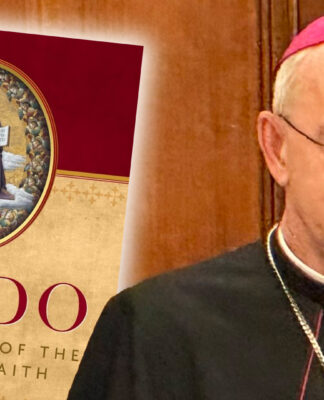THE PHOTOGRAPH of a man carrying a basket of carrots that was posted on Facebook took the social media by storm and exposed the broadcast news media’s compromise of journalism rules just to beat the competition and spike up ratings and profits.
Jeyrick Sigmaton, a farmer from Bauko, Mountain Province, gained instant fame after netizens lavished praises on his image which showed his good looks despite his rather, er, lowly livelihood. Immediately, online media outlets picked up his story but it was giant GMA Network that had him signed into an exclusive contract last February.
Sigmaton then appeared on the Feb. 28 episode of GMA 7’s Saturday evening show, Kapuso Mo, Jessica Soho, where culturally sensitive individuals raised their eyebrows on a comment made by Jimmuel Naval, a professor from the University of the Philippines-Diliman.
Habi Collective, a group of audio-visual artists, criticized Naval’s comment on the intermarriage between Caucasian missionaries and Cordillerans that supposedly resulted in an “improvement of race,” as shown by the fair looks and the aquiline nose of Sigmaton.
The group’s open letter was accompanied by mid-20th century photographs of Cordillerans showing that the cultural communities had pointed noses even before the arrival of Caucasian missionaries.
Habi likewise slammed the show’s researchers, saying they should have interviewed appropriate resource persons. They said a professor from the University of the Philippines-Baguio would have been a more reliable source.
This incident should at least show the broadcast news media’s mania for exclusivity and sensationalism might have gotten the better of journalistic responsibility.
The incident likewise casts a pall on the state of Philippine journalism especially with the prevalence of the “Netizen beat”—referring to how television news media coverage is propelled by reactions and comments of social media users.
Sigmaton’s story was hardly news, but media organizations ran after him as if the fate of the nation depended on him.
GMA’s “aggressiveness” made it prey to slapdash verification and research. Instead of applying journalistic principles, it was clearly more intent on earning the bragging rights of airing a quite silly story on national television first. Most media companies want to get the coverage first, but like GMA, cannot seem to get it right and do its job properly.
Media outlets should regain sensitivity and be more attentive and careful to the stories they pick up from the social media, especially as to the nature of the information and its relevance to the public.
Picking up Sigmaton’s story itself betrayed GMA’s shallowness. But GMA further dug its own shallow grave when it tried to cover up the issue’s small-mindedness by making the motions of holding an intellectual discussion which however was bereft of any intelligence.
GMA got what it bargained for.
Communio et Progressio, the pastoral instruction on social communication that elaborated on Inter Mirifica, the decree on the media issued by the Second Vatican Council. says “media can make for greater understanding and closer unity.”
Through its Sigmaton story, has GMA fostered “greater understanding and closer unity”?
Moreover, Communio et Progressio states, “Every communication must comply with certain essential requirements and these are sincerity, honesty and truthfulness.”
Has GMA fulfilled the three requirements—has it been sincere, honest and truthful?















